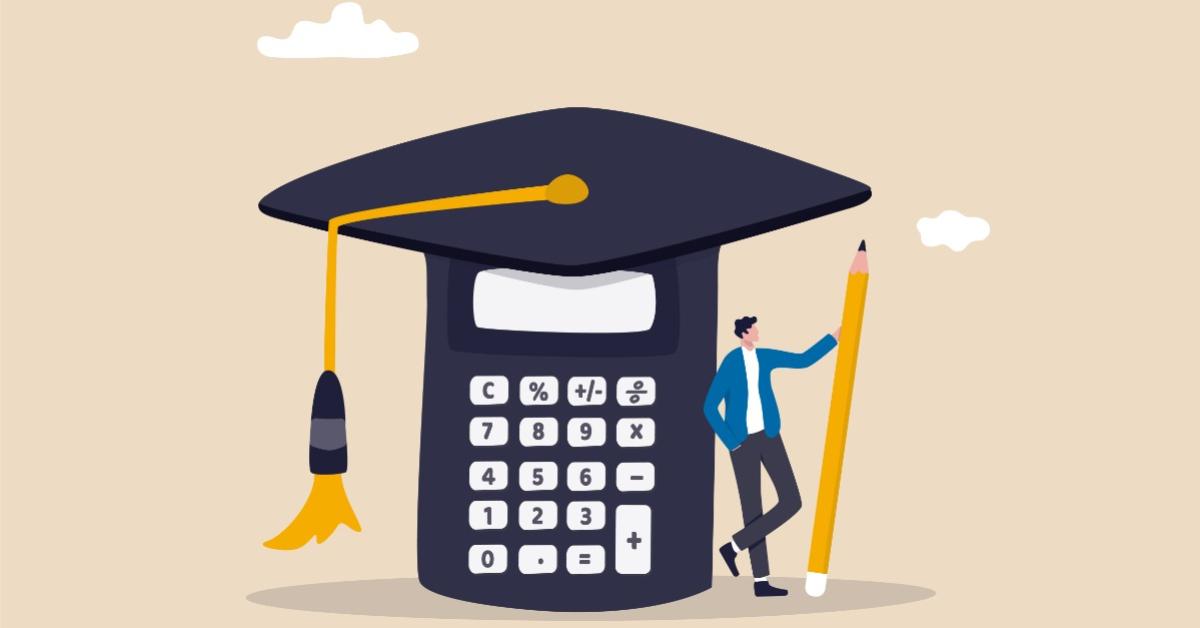
There is no doubt that Joe Biden’s student loan forgiveness plan will help the people it is intended to help at everyone else’s expense, as critics correctly point out. The bigger issue is that it does absolutely nothing to lower the costs associated with higher education.
Imagine you accidently shoot yourself in the foot with a nail gun. Enduring incredible pain, you drive to the hospital. Now imagine that the doctor, seeing you in this terrible pain, gives you a prescription for Percocet with infinite refills but does not remove the nail!
Months go by and the pain keeps getting worse, and now you are on the street, looking for heroin. You overdose, but luckily your friend is nearby and he calls the doctor, who arrives on the scene just in time to save you with a shot of Narcan. You tell him that the pain in your foot is getting worse. Thinking of nothing else he can possibly do, he doubles your dosage of Percocet.
In this analogy, Biden is the doctor and the student loan forgiveness plan is the shot of Narcan. According to the Education Data Initiative, the average cost of college tuition, fees, and room and board for a full academic year in 2022 is $35,551. According to the National Center for Education Statistics, the figure for 1980 was $2,809. Even after adjusting for inflation, the increase in the cost of a college education is still over 230 percent. What explains this?
In 1965, the federal government began securing student loans under the Higher Education Act. In 1993, the federal government began lending to students directly. Now, in 2022, outstanding student loan debt sits at $1.748 trillion, with nearly all student loans coming from the federal government.
In 1960, 7.7 percent of the US population over the age of twenty-five had graduated college, and by 2021, that measure had grown to 37.9 percent. Some may try and point to this increase in the demand for higher education, influenced by the abundance of lax and easy loans, as an explanation for the exponential rise in college costs. After all, the law of supply states that, other things held constant, suppliers will only supply more of a good at higher prices. However, other things have not held constant. The federal government has been ready and willing to loan more to meet every single increase in price.
Since 1965, universities have been sheltered from market forces. Because student loans will continually increase to meet the rising costs, universities have no incentive to compete based on price. In fact, they have every incentive to keep raising prices because this hasn’t resulted in lower attendance.
With less regard for costs and pricing, schools feel pressured to compete for students by other means, adding things such as indoor swimming pools, lazy rivers, rock-climbing walls, and unions for students of every marginal identity, as well as creating nonsensical administrative roles like diversity officers and a dean of diversity for every department, all of which increase costs.
Grade inflation, the phenomenon of awarding progressively higher grades over time by lowering academic rigor, has perhaps been the most insidious way to compete. No young person wants to take out thousands a semester in debt for courses they can’t pass, and being cash cows, no college wants to lose prospective students or have them fail out because their courses are too difficult. In 1960, only about 15 percent of grades awarded were As. By 2012, As had grown to 45 percent of all letter grades awarded.
It was after the Higher Education Act of 1965 that the first modern pseudodisciplines appeared in the university. In the early 1970s, the first courses in women’s studies were offered in universities. As it became easier to be admitted to and to finance college, schools felt pressure to offer paths of study for people with varying interests and varying intellectual ability. Absent government loans, cultural Marxism courses would be too impractical to exist.
Because loans are so easy to obtain in such large amounts, young people are less encouraged to make responsible decisions. For example, attending a community college for their general education requirements and later commuting to their nearest university. Or curbing their interest in Marxism and pursuing a two-year technical degree instead. To their credit, many borrowers chose these more practical options, given that Biden’s loan forgiveness is estimated to eliminate the debt of one-third of borrowers.
All of this has diminished the real value of degrees by creating a giant college bubble. The bachelor’s degree is the new high school diploma, and we aren’t any smarter for it. Generally, the more abundant a good becomes, the lower its price should be. Government loans are the cause of exorbitant college costs. Without them, the abundance and lower value of degrees would be reflected in their price.
The exponential rise in the cost of a college education simply would not have been possible without government student loans. It is the definition of moral hazard in the extreme. The government doesn’t need to worry about profit and loss. It doesn’t need to worry about going out of business, because it is bankrolled by the taxpayers in perpetuity. The opposite is true of private lenders in a free market. They would have to consider many things, like SAT scores and high school performance. They might even want the student to take an IQ test. But most importantly, they would need to know what the student is going to study. A premed or engineering student would be a far greater prospect for a loan than a gender studies major. The federal government considers nothing because it doesn’t care how much of our money is wasted.
At the thought of facing the real world, every eighteen-year-old is filled with existential dread. It is understandable that they would like to avoid it for four more years. But it is morally outrageous to ask their peers who went straight into the workforce to pay for it.
The solutions to student loan debt and the costs of higher education are simple, obvious, and one and the same. The federal government must stop offering student loans and allow borrowers to file for bankruptcy. Economists have known this for a long time. Unfortunately, this harsh reality is so politically unpopular that both the public and their representatives are in complete denial of it. Instead of recognizing the trend and correcting their missteps, they have stepped further in the wrong direction at every moment of decision and continue to do so.
The sad, but hopeful, truth is that with modern technology, the vast majority of higher education could be offered at lower costs than ever before. Many world-class professors post their lectures to YouTube. Working people with intellectual interests buy products from the Great Courses to listen to throughout their day. Interactive educational systems like MyMathLab, by Pearson, make learning calculus easier than learning one-on-one with a professor. If the government would get out of the student loan business, market forces would be restored to higher education. The result could be glorious.





